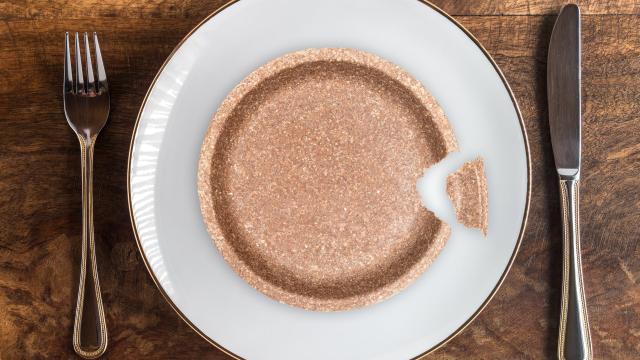Eating comes naturally to most of us humans, and our collective evolution as a global civilisation has been shaped by what we can eat and how easily we can eat it. Food and its consumption have driven all sorts of technological and societal advances — before forks, people just stabbed sharp knives into their gobs and hoped for the best — but utensil technology’s last major upgrade was the plastic utensil that is used once, and then tossed into a landfill where it will exist until the sun explodes. Which isn’t such a terrific advance after all — and why the relatively recent development of edible utensils should get you excited.
Yes, there now exist forks, spoons, cups, and bowls that you just eat when you’re done with your meal — sort of like an ice cream cone. There’s even a case to be made that edible plates and utensils solve a lot of problems you don’t even know you have, and an increasing number of companies are producing them. You can buy edible bowls and plates, spoons, forks, cups, and straws with the click of a mouse. Here’s why you might want to do just that.
The environmental benefit
First and foremost, using edible utensils instead of single-use plastic ones is a powerful way to reduce waste. We toss hundreds of billions of plastic cups, straws, and other utensils into landfills every single day — and that plastic will be sitting there, releasing toxins into the groundwater, until the sun explodes. Just about every single piece of plastic ever produced still exists somewhere in the world, and will for centuries to come. The widespread use of edible utensils, though unlikely, would significantly reduce the amount of plastic waste in the world. The environmental impact of producing all those edible plates is harder to gauge, but at least some of them are made from byproducts produced by other aspects of food production.
Fewer chores
Using edible utensils at home, on the other hand, has the obvious advantage of reducing the amount of time you spend washing dishes. Washing dishes by hand is a sucker’s game anyway — but imagine if you simply ate the evidence every time you sat down to dinner and never had to wash (or pre-rinse) another dish? This also has the knock-on effect of reducing the amount of water you use on a daily basis — modern dishwashers are pretty water-efficient, but nothing beats using zero water to wash dishes because you literally ate them.
You don’t have to eat them
The words “edible utensils” might give you pause. But that’s ok — you don’t have to eat your edible fork and plate, and you’ll still be doing the world a solid, because they are biodegradable in as little as 30 days. In almost every case an edible utensil, bow, or plate can literally be tossed onto the ground, where it will dissolve into harmless crumbs within a few weeks. Even if you just toss them into the garbage and they wind up in landfill, they’ll vanish in a short time, no harm, no foul.
Delicious and nutritious
Surprisingly, edible forks and spoons come in a variety of flavours and can make a decent snack all on their own. They’re essentially creatively shaped crackers, and most are made from nutritious stuff like millet, sorghum, or wheat bran. Many recipes include other so-called “superfoods” that make them into nutritional powerhouses. And most edible utensils are gluten-free as well. So using edible utensils can actually improve your meal experience.
The downsides of edible plates and utensils
That all sounds good, but there are a few drawbacks to consider:
- Cutting: You won’t find many edible knives out there, for the simple reason that it’s difficult to make one that won’t snap in half when you’re trying to saw through something, never mind the challenge of getting a sharp edge on what’s essentially a hard biscuit.
- Portion control: Using an edible plate and utensil does add calories to your meals. If you don’t take that into account, you might wonder why you’ve gained three pounds a few weeks after making the shift.
- Expense: Right now, single-use plastic utensils are usually given to you for free (or if their cost is absorbed into the price of your food, it’s minimal), and metal utensils at home obviously only cost you the water to wash them. Edible utensils are relatively pricey — 10 to 20 times more expensive than plastic — which translates to a premium of about $US1.50 ($2) when you’re eating out, for example.
Realistically, you aren’t going to shift to a 100% diet (so to speak) of edible plates and utensils. But given increasing concerns about the impact unchecked plastic production is having on the environment and our bodies, it’s nice to imagine a tastier future.

Leave a Reply
You must be logged in to post a comment.